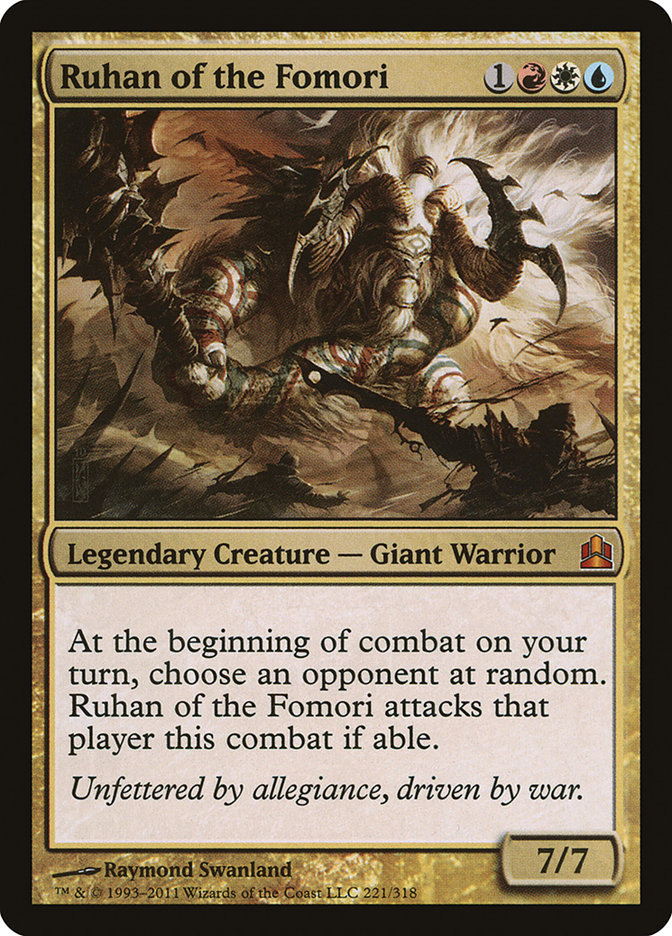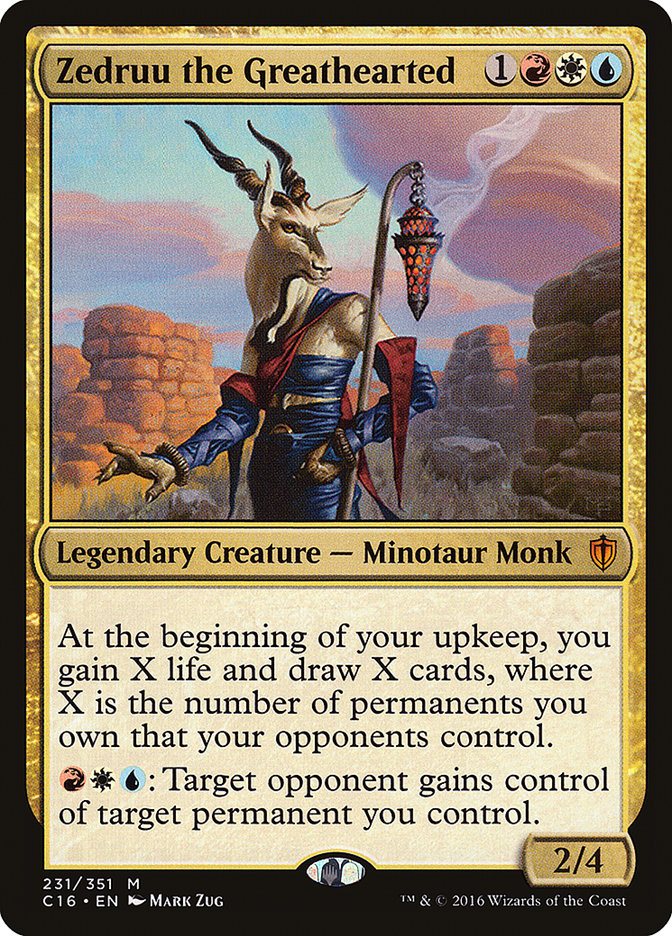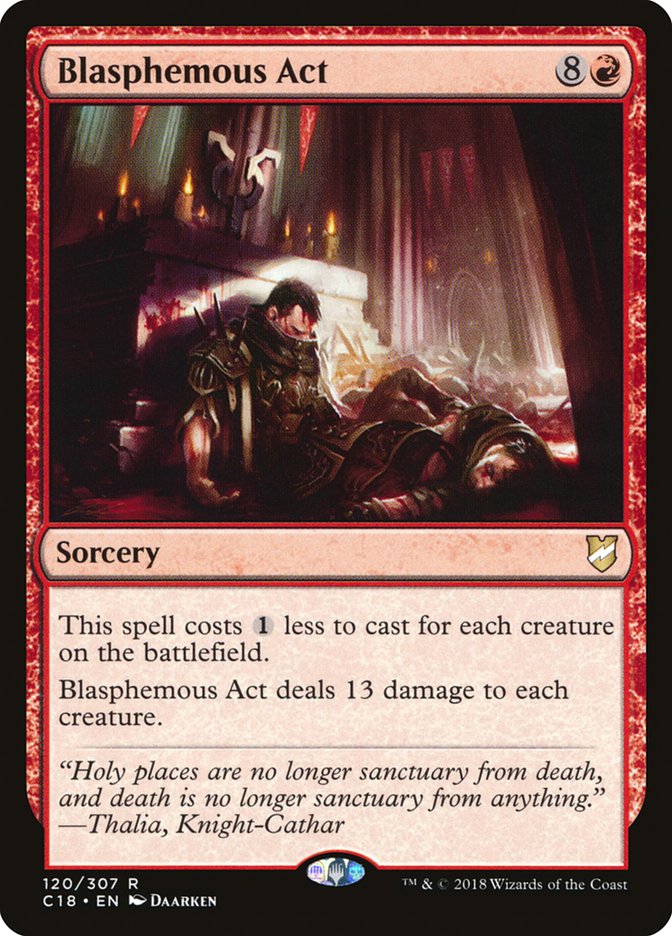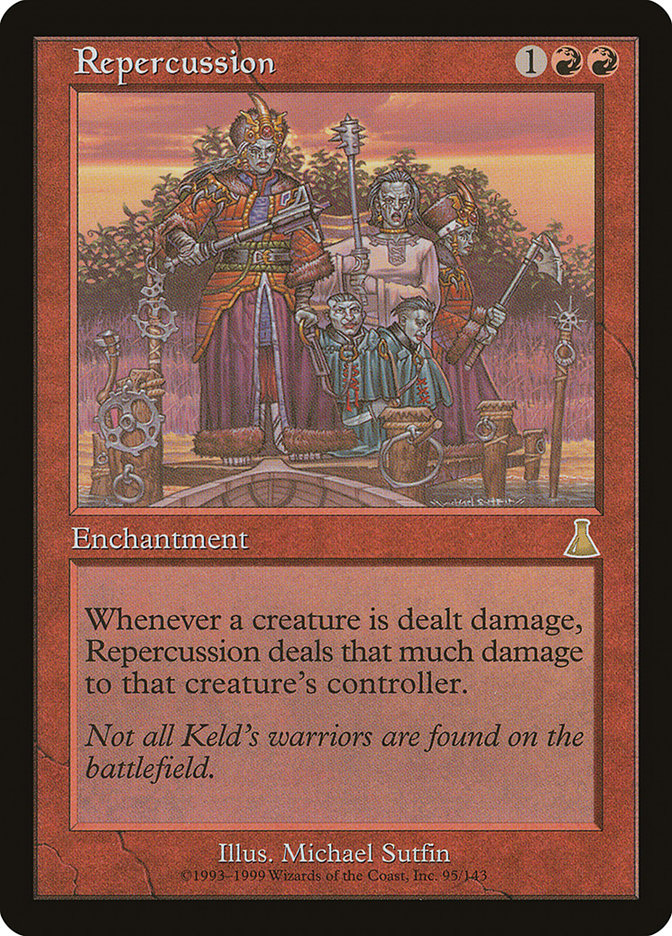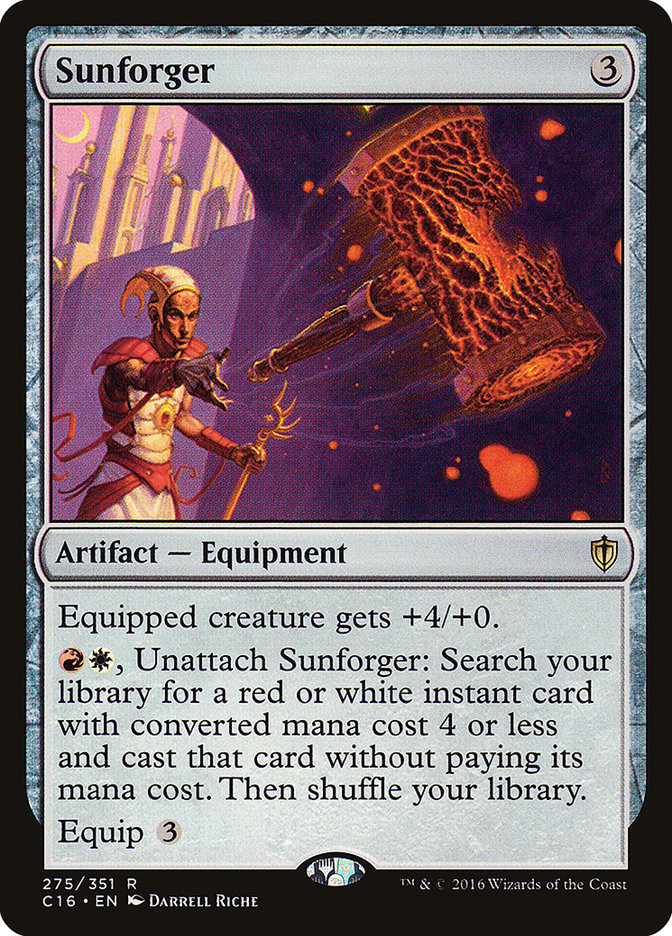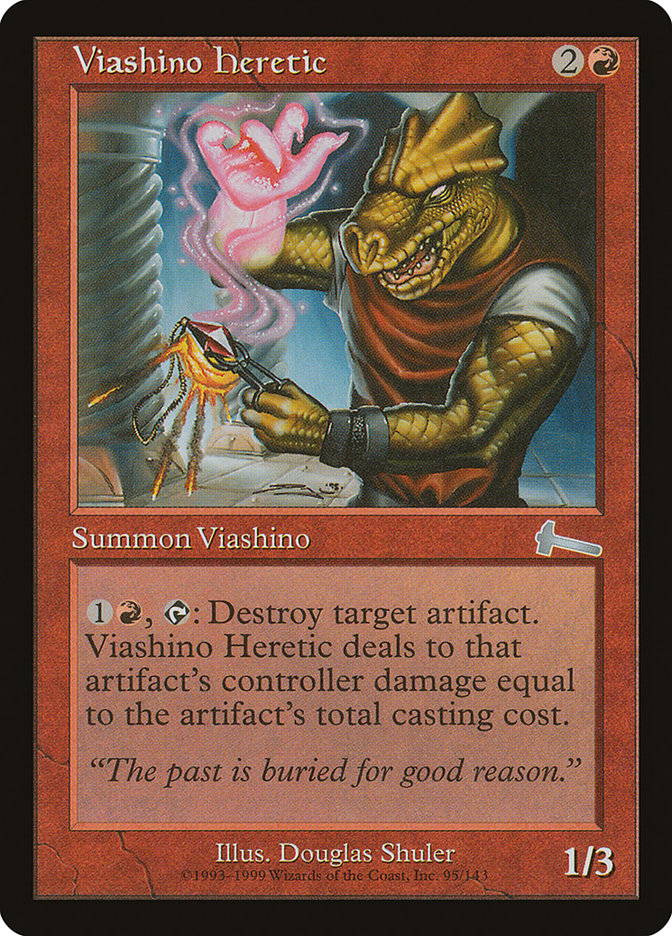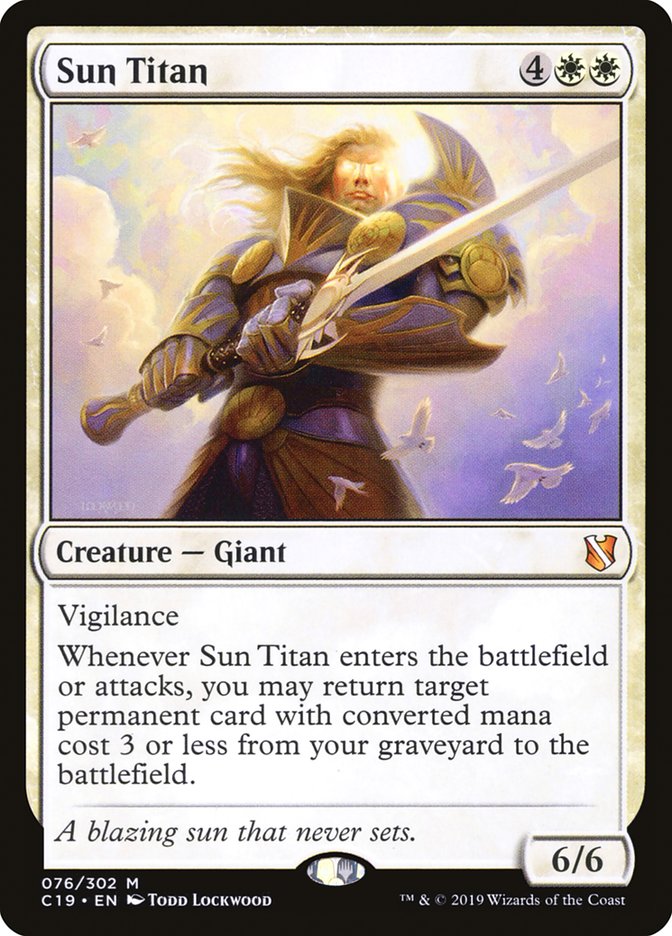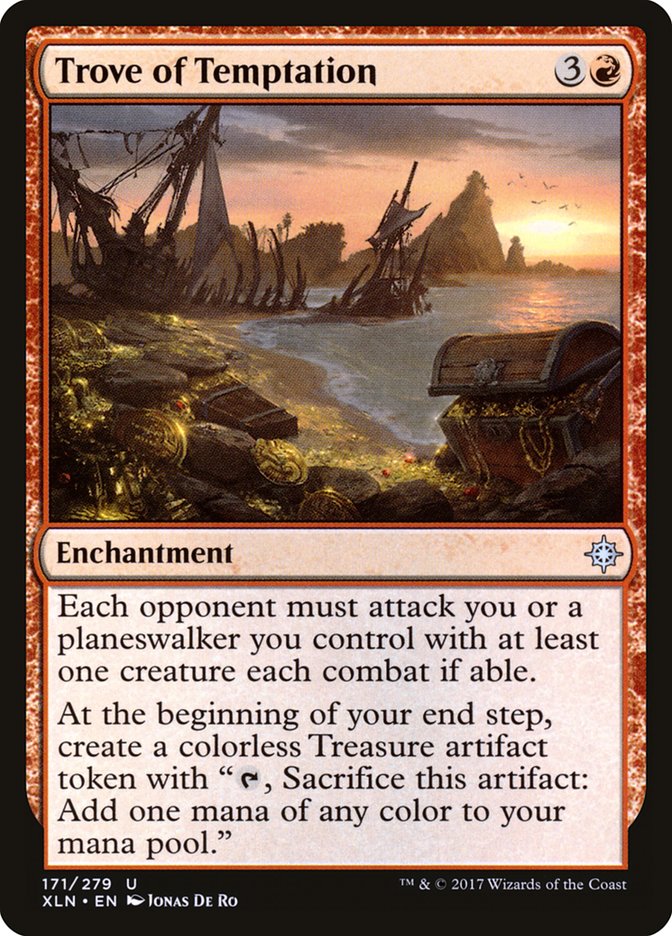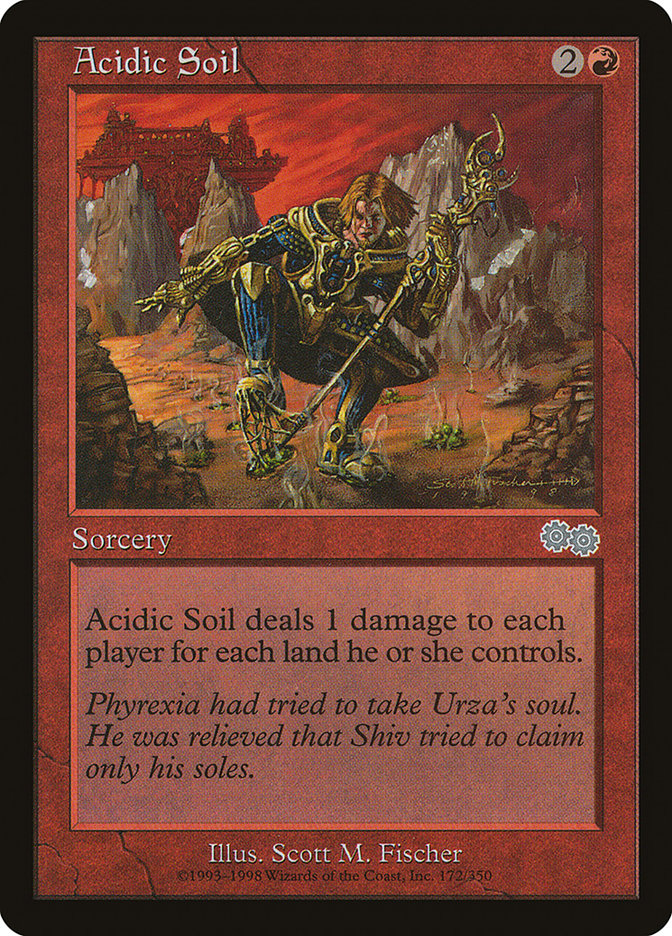My most infamous of decks, You Did This to Yourself, is nearly eight years old. That’s approximately one million in Magic years. The idea hasn’t changed since the beginning. What started as building around a kernel of an idea Parallectric Feedback has turned into the deck that’s consistently provided the most epic of plays. Today we’re going to look at what makes it tick and some of its most triumphant moments.
Here’s the latest version of it:
Creatures (13)
- 1 Solemn Simulacrum
- 1 Mischievous Quanar
- 1 Viashino Heretic
- 1 Aura Thief
- 1 Sun Titan
- 1 Phyrexian Metamorph
- 1 Boros Reckoner
- 1 Burnished Hart
- 1 Dualcaster Mage
- 1 Illusory Ambusher
- 1 Magus of the Balance
- 1 Truefire Captain
- 1 Thought Sponge
Planeswalkers (3)
Lands (37)
Spells (46)
- 1 Land Tax
- 1 Sol Ring
- 1 Reverse Damage
- 1 Darksteel Ingot
- 1 Desertion
- 1 Repercussion
- 1 Gilded Lotus
- 1 Reflect Damage
- 1 Aether Flash
- 1 Mind Stone
- 1 Honorable Passage
- 1 Reins of Power
- 1 Acidic Soil
- 1 Rhystic Study
- 1 Mirror Strike
- 1 Powerstone Minefield
- 1 Radiate
- 1 Boros Fury-Shield
- 1 Copy Enchantment
- 1 Sunforger
- 1 Cerebral Vortex
- 1 Parallectric Feedback
- 1 Reiterate
- 1 Coalition Relic
- 1 Chain Reaction
- 1 Lightmine Field
- 1 Blue Sun's Zenith
- 1 Blasphemous Act
- 1 Blind Obedience
- 1 Deflecting Palm
- 1 Jeskai Banner
- 1 Comeuppance
- 1 Day's Undoing
- 1 Hedron Archive
- 1 Thought Vessel
- 1 Dazzling Reflection
- 1 Refuse
- 1 Settle the Wreckage
- 1 Trove of Temptation
- 1 Coveted Jewel
- 1 Azorius Locket
- 1 Solar Blaze
- 1 Winds of Abandon
- 1 Arcane Signet
- 1 Leadership Vacuum
- 1 Mandate of Peace

First, let’s talk about the commander. Ruhan of the Fomori was the original choice because it was the Jeskai (before Jeskai existed) commander that least fit the deck’s style. I wanted something jarring that simply didn’t make that much sense, sort of a meta-misdirect. I suppose I eventually undercut that by putting the deck’s name on the side of the box, but by that time, everybody knew what it was. Ruhan can be pretty aggressive, and this wasn’t that. I’ll often cast him on Turn 3 or 4 just to see what’ll happen, but for the most part, once he gets killed the first time, I’ve purchased enough time to do the other things I want to do. Occasionally I’ll cast him a second time to make use of the Sunforger package in case I can’t get one of the other creatures to stick.
Even though there’s not much to donate, I’ve played Zedruu the Greathearted as the commander a few times, simply to see what kind of chaos we can create. A number of the enchantments, like Aether Flash, Powerstone Minefield, and Lightmine Field, don’t care who controls them—Boros Reckoner and Truefire Captain can take the two or attack into the fields without problem unless Repercussion is also on the battlefield; then it can get awkward. Coveted Jewel certainly gets passed around. I’m sure that I could swap out some stuff to make Zedruu do more work, but I wouldn’t want to slight Ruhan after all the fun we’ve had together.
The deck came about from a single conversation with Todd Palmer, one of my Monday Night Gamers and at the time, Armada Games employee. In the Armada Games EDH League, Exsanguinate was all the rage and games were devolving into who could get there faster. You can imagine that Cabal Coffers and Urborg where at the center of it all. At the shop, Todd was looking up cards and called me over to ask me if I had seen Parallectric Feedback. I vaguely recalled it from Guildpact, but I immediately smelled what he was cooking. Hour of Devastation gave us another, even saucier version of Parallectric Feedback in Refuse // Cooperate. The deck quickly morphed into a deck that punishes people for being greedy. It really doesn’t do much unless opponents try to do broken things. Then it shines. Over its lifespan, it’s also used its opponents’ resources, especially creatures, to hurt them via cards like Bribery or (the still-remaining) Desertion. It’s also won its share of games via Reins of Power, but that’s a card that has also been used defensively. The deck has moved into more fully reactive mode as time passes.
The deck has a few more traditional synergies that kill players, like Blasphemous Act and Repercussion. You obviously don’t need to have too many creatures on the battlefield before that can be deadly. Despite being an aggressive creature, without an infrastructure to support battling, Ruhan doesn’t do much alone. In the few hundred times I’ve played the deck over the years, I’ve gotten fewer than ten commander damage kills. Mostly, it’s just seeing what kind of nonsense other players are doing so that I can nonsense them back. I suppose that, in a long enough game, Acidic Soil will do some heavy lifting, but that comes with some inherent dangers, especially if I haven’t had enough damage prevention through the course of the game. The Wanderer, one of the deck’s most recent additions, helps with that.
The first time I really knew I was onto something was at the Gen Con the year after I built the deck. I was playing in a five-player star game with Brian David-Marshall, poker star David Williams, (future) CAG member Adam Styborski, and artist Eric Klug. Eric was one of my allies, but when he activated his Heartless Hidetsugu, it seemed like the only reasonable play was to cast Reflect Damage. Given the star power at the table, there was a pretty big crowd. When I cast it, the response was loud and immediate. It was one of those moments that captured the essence of my repeated mantra: create the games that everyone will remember, not the ones you’ll want to forget. From there, it was a search to find the cards that create the biggest blowouts and roars from the table. It’s turned into a deck that isn’t oppressive, but one you still always have to keep your eye on.
The Sunforger package creates the most flexibility, since you can find the right card for the situation. Comeuppance works in situations where Dazzling Reflection doesn’t, for example. I’ve activated Sunforger a few times thinking that I still had Holy Day in the deck—but it’s been somewhere north of four years since I took it out. Makes me think that I should put it back in, but it’s a delaying tactic, not advancement of the gameplan. Still, sometimes you just need a Fog.
Mirror Strike is one of my absolute favorite Sunforger-eligible cards. It’s paid dividends both as you might expect—by killing someone with their own Voltron’d commander (although it’s woefully unhelpful against Uril, the Miststalker)—and less conventionally by not blocking a Blightsteel Colossus. I even once caught someone playing Omnath, Locus of Mana without a mana sink; it was a 49/49 at the time it attacked me.
The card that hasn’t quite worked out the way I intended was Cerebral Vortex. We all know that Commander players love to draw cards. The problem is that when they draw them in quantities large enough for Cerebral Vortex to be problematic for them is that they generally also draw an answer for it. It’s still worth having, since I’m happy to pay take two damage for two cards on someone else’s turn; it’s just rare put together the kind of signature moment the deck is known for.
The hidden gem that’s worked out well is Viashino Heretic. People definitely have to read the card. In the deck’s ancient days, I got into a race with someone who had Darksteel Colossus on the battlefield. I’d turn the Heretic on them; they’d turn the Colossus on me. I used a Reverse Damage to stay in the race, and then finished them off before they could get to me a final time. In more conventional usage, the Heretic will always find viable targets. Check out the next Commander game you play and see if there isn’t at least one artifact a turn that you wouldn’t mind nuking.
Because it’s in Jeskai colors, the deck needs mana rocks to ramp up its production game. Land Tax helps a great deal, since you’re always going to be the player behind on land. It’s even not a dead later-game draw, since it only costs one mana and you can just start thinning the deck. The rocks like Azorius Locket and Mind Stone have paid dividends, since there’s also a top-end of mana that the deck needs, so sacrificing them to draw cards is a solid investment. Sun Titan is in the deck to try to loop through the two of them and Burnished Hart to really solidify the manabase.
The recent arrival of Trove of Temptation sets up a sort of dream situation for the deck. Often, players are hesitant to attack, since they know bad things could happen. Trove of Temptation becomes this game of attrition. If they attack with small creatures who have gotten onto the battlefield before Aether Flash arrived, they’ll get caught up in the Minefield problem – and if they survive, to potentially run into Boros Reckoner or Truefire Captain waiting on the other side of the field. Larger creatures will cause the anxiety of also getting blocked by one of the two of them or running into some of the deck’s signature spells. Then it creates a Treasure token at end of turn to help the mana situation. Maybe I could replace the always-annoying Rhystic Study with the nearly-as-annoying Smothering Tithe, hoping to use Copy Enchantment on Revel in Riches…okay, that’s just too much dreaming. I think we’ll stick to just fueling spells with them.
There have been occasional game wins with Reins of Power, a card you might want to consider for any low-creature-count deck. There are the obvious situations of “I have none, you have lots, let me smash you,” which have just punished someone for their ridiculous battlefield state. It’s more frequently a defensive weapon that turns into some sort of sweeper as I borrow a third party’s team to fend off an incoming attack, making the blocks that will get the greatest number of creatures into the graveyard.
The most common way to end a game has been the previously mentioned Acidic Soil. I went into the deck originally to hang a cost on the greedy ramp decks, but it’s turned into an inevitability factor. Being able to copy it with Reiterate or the back half of Refuse // Cooperate can turn it into quite a potent offensive weapon, even killing in the mid-game of an otherwise-aggressive battle. Obviously, lifegain will make things way tougher. I’ve already gotten the double whammy of knocking out someone with Settle the Wreckage on a huge team one turn and Acidic Soil the following one.
Of course, the spells everyone comes to see are the retributive strike damage prevention beauties: Boros Fury-Shield, Comeuppance (especially dangerous with Repercussion on the battlefield), Deflecting Palm, Honorable Passage, Mirror Strike, and Reflect Damage. I’ve certainly killed players with each of them, even though Honorable Passage is a little narrow. It’s generally gotten them from red sources that are also other colors, like Prossh, Skyraider of Kher or (in the earlier days when it was popular) Uril, the Miststalker. While Mirror Strike might not work on Uril, since the spell is targeted, Reflect Damage and Deflecting Palm definitely do, because they’re not.
You Did This to Yourself isn’t the deck I have that has the best winning percentage. It is, however, the one that’s created the best and longest-lasting memories, and for me, that’s what this format is all about.
Sheldon Menery Deck Database
Check out our comprehensive Deck List Database! Click each section for lists of all my decks.
Signature Decks
These are the decks that define my personal play style to the greatest degree and to some extent lay the original foundation of the format. They’re also the ones you’re most likely to see me bringing along to spell-sling at an event.
The Chromatic Project
The Chromatic Project started as an effort to build at least one deck of all 27 possible color combinations, which was expanded to 32 when we finally got four color commanders. There’s more than one of some combinations, mostly because I have a Temur problem, plus some partner combinations are too enticing to pass up.
Mono-Color
Guilds
Shards and Wedges
Four Color
Five-Color
Partners
The Do-Over Project
The Do-Over Project is the next step after the Chromatic—building a deck with each of the same Commanders, but not repeating any cards save for basic lands (props to Abe Sargent “Next 99” idea). The Do-Over Project is still ongoing because we keep getting saucy new sets with creative and colorful commanders to build new decks with.
If you’d like to follow the adventures of my Monday Night RPG group (in a campaign that’s been alive since 1987) which is just beginning the saga The Lost Cities of Nevinor, ask for an invitation to the Facebook group “Sheldon Menery Monday Night Gamers.”


